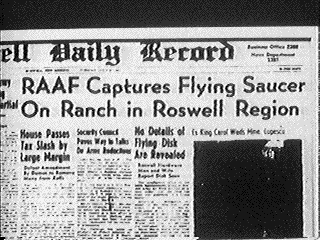Backstory For My Award-Winning Sector 64 Series
For the backstory of my SECTOR 64 series, I put forth an alien first-contact scenario that my readers find very plausible, some even wondering aloud if this could be our current reality.
Let’s imagine that elsewhere in the galaxy a species elevated itself from the primordial soup a million years ahead of us. Making the most of that thousand-millennia head start, they master physics, achieve faster than light (FTL) travel, and populate thousands of star systems.
Always looking for burgeoning technological societies to bring into the galactic government, they populate the galaxy with a network of detectors designed to watch for certain markers thought to be key indicators, i.e.: unnaturally organized radio waves or light waves (laser beams) and unnatural fission reactions (nuclear detonations). Some, like radio waves, would probably just be annotated for future research. Others, like nuclear detonations, would require a more urgent investigation.
While they’ve mastered FTL travel and communications, their sensors are still limited to detecting occurrences at the speed of light. In other words, if a burgeoning society starts blasting radio waves or nuclear electromagnetic pulses (EMPs) across the cosmos, our curious aliens wouldn’t detect it until the wave traveled at the speed of light to the nearest sensor. Then it could use their FTL sub-space communication network to pass on the news.
To comprehend the logistics involved, we must have a full appreciation of the galaxy’s size. It’s a BIG galaxy. If our curious aliens only wanted to deploy ten million sensors, they would have to disperse them throughout the galaxy on a grid with one-hundred light-year spacing. The Milky Way is 100,000 light-years across and one thousand light-years thick. That means if you could travel across the entire width of the galaxy at the speed of light, the Earth would circle the Sun 100,000 times during your trek. (Note: these are external observations. The hypothetical FTL traveler would experience this time quite differently, but that’s a subject for a future blog.) Even if you could travel at an incredible 100,000 times the speed of light, an Earth year would pass in the time it took you to traverse the galaxy.
When it comes to jaunting about the Milky Way, your FTL travel would have to be SIGNIFICANTLY faster than the speed of light to be of any appreciable use. Scientist and sci-fi writers often employ wormholes due to their hypothetical ability to fold space. Joining two points of space-time, like folding a paper in half, brings two remote locations together, rendering interstellar travel as simple as stepping through a door.
Back to our first contact scenario. Because of the aforementioned galactic scale, our fictional aliens have quite a few (read: ten million) sensors spread throughout the Milky Way. One day, they receive a signal indicating that a nuclear device detonated on a planet in the remote portion of the galaxy identified as SECTOR 64. They discover the signal originated from a medium-sized rocky planet in a solar system only two light-years from the sensor. (That would be very fortuitous, remember our one-hundred light-year spacing.)
So our curious aliens fold space-time and dispatch a scout ship to SECTOR 64. Arriving only a few days after their sensor detected the first nuclear blast, they get to the planet the locals (humans) call Earth in a year the humans have designated as one thousand nine hundred and forty-seven or 1947. Because of the sensor’s two light-year distance from the planet, two Earth years have passed since their original nuclear detonations in 1945.
Our curious alien scouts travel to the only place on the planet where they detect nuclear weapons. It happens to be relatively close to where the first nuclear detonation occurred. The humans call the region New Mexico.
In 1947 only one nuclear-armed bomber squadron existed, the 509th Bomber Group based at an Army Air Corp Base known as Roswell Army Air Field (RAAF).
Yep, you guessed it. That’s near an infamous small town named Roswell, New Mexico.
In a tragic accident, the scout ship is knocked down by a surprisingly powerful thunderstorm.
After a series of nearly calamitous events, the aliens do make first-contact with world leaders of the day.
Click or tap here to read PartII of my Plausible Alien First Contact Scenario, and find out about the decades-long program that our hypothetical galactic government would use to integrate us knuckle draggers into their society. Discover why it would be a secret program, even today, almost seventy years later.
Sound like an interesting backstory for a series?
Now for free, get the prequel novella, Sector 64: First Contact, that kicks off my award-winning apocalyptic series. Available as both a free ebook and a free audiobook (narrated by R.C. Bray—The Martian).
[mybooktable book=”sector-64-first-contact” display=”cover+buybuttons” buybutton_shadowbox=”false”]






 Thank you to the Society Of Voice Arts And Sciences for nominating my narrative Dream Team, R.C. Bray and
Thank you to the Society Of Voice Arts And Sciences for nominating my narrative Dream Team, R.C. Bray and 